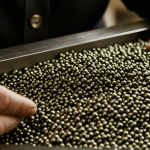Reliable oil and gas transport depends on robust pipe solutions designed to withstand high pressure and harsh environments. Understanding pipe types, materials, and standards ensures efficient and safe operations. Choosing the right oil pipe not only supports industry demands but also minimises risks and maintenance costs across the supply chain.
Defining Oil Pipes: Essential Functions and Industrial Uses
In oil and gas infrastructure, pipes serve as the vital channels moving fuel from one point to another with efficiency and safety. In this context, learn about the various oil pipe solutions from vallourec provides useful insights into the engineering behind reliable pipelines, outlining options for industries in need of robust oil flow solutions.
Have you seen this : Top oil pipe technologies ensuring efficient oil and gas transfer
Industrial operations rely on oil pipe fittings and custom connectors to manage changing conditions and system layouts. Heating oil pipe designs, particularly in residential and commercial systems, prioritize safe transport and durability, with materials often selected for their chemical resistance or compatibility with specific fuels such as kerosene and biofuels. Underground installations require types like plastic coated copper pipes, which resist corrosion while providing a secure conduit for oil—essential for safety in challenging subterranean environments.
Efficiency hinges on the oil flow rate in pipes and adequate sizing, as improper dimensions or faulty fittings can hamper operation. Strict oil pipe installation guidelines exist to minimize these risks by ensuring optimal pressure and minimizing leaks, contributing to the reliability demanded across energy and heating sectors.
Also to discover : How Can Automation Impact the Future of UK Businesses?
Oil Pipe Types, Materials, and Sizing Standards
Common Oil Pipe Types
Precision: The most common oil pipe types include seamless pipes, welded pipes, line pipes, umbilicals, and risers (SQuAD method).
- Seamless pipes are favored for high-pressure applications due to their structural integrity.
- Welded pipes are more cost-effective and suitable for lower-pressure applications.
- Line pipes are crucial for transporting oil above and below ground, designed for reliability.
- Umbilicals connect subsea equipment, while risers serve vertical connections between the seabed and surface.
Popular Materials
Copper, plastic, plastic-coated copper, and PVC are frequently chosen materials.
- Copper oil pipes are appreciated for their corrosion resistance and flexibility, making them ideal for both aboveground and underground use.
- Plastic oil pipes offer ease of handling, are lightweight, and resist internal corrosion, reducing maintenance.
- For biofuel applications, biogreen options in chemical-resistant plastics provide safe transport, sharply minimizing contamination risks.
- Plastic-coated copper combines the durability of metal and the protective benefits of plastic, enhancing underground lifespan.
Sizing Options and Standards
Pipe sizing—typically 10mm, 15mm, and 8mm—is vital for ensuring the right flow and pressure.
- Charts and standards help match the pipe to heating system demands.
- Selecting the appropriate size and fittings ensures leak-free connections, improved system efficiency, and simple repairs.
- Reinforcement inserts for soft copper (1mm, 15mm) help maintain precise internal diameters and secure fitting.
Best Practices for Oil Pipe Installation and Maintenance
Installation Guidelines for Residential, Commercial, and Underground Systems
Begin with accurately measuring pipe lengths and selecting a pipe type compatible with the fuel. Use flexible or rigid pipes according to the setting—flexible for residential and some commercial environments, rigid or plastic-coated copper for underground runs. Underground installations require pipes resistant to corrosion and mechanical damage; surrounding pipes with robust conduit ducting adds substantial protection. Always mark underground oil lines with hazard marker tape to prevent accidental excavation damage in the future.
Insulation and Protective Ducting for Durability and Performance
Apply insulation methods tailored to the installation’s exposure. Use closed-cell foam or pre-insulated ducts in exposed or outdoor areas to prevent temperature fluctuations and condensation. For underground applications, plastic-coated copper and correct ducting withstand soil moisture and shifting ground, significantly boosting performance and lifespan.
Maintenance Routines and Leak Detection; Signs Indicating Replacement Needs
Routine oil pipe maintenance involves visual inspections for corrosion, physical damage, and joint integrity. Use leak detection methods such as pressure testing, electronic sensors, or dye tests for early warning of leaks. If persistent damp patches, pressure drops, or visible pipe deterioration appear, these are signs indicating replacement. Replace pipes promptly when functionality or safety could be compromised to minimize disruptions and hazards.
Sourcing, Fittings, and Brand Quality for Oil Pipes
Locating Local Suppliers and Reputable Distributors
Precision: Trade supply stores and online catalogues list oil pipe fittings near me through postcode filters and distributor maps for convenient sourcing. Shops like Screwfix display heating oil pipe and fitting options suitable for various fuel types and residential or industrial installs. Many platforms enable sorting by pipe type, price range, and compatibility, supporting quick selection of safe and compliant products.
Leading Brands and Product Sourcing
Reputable names including Worcester Bosch, Anglo Nordic, EOGB, and BES are recognized for their robust oil pipework offerings. Vallourec serves the oil and gas sector with tailored solutions such as line pipes, umbilicals, and advanced flowlines, designed for efficiency and reliability in demanding environments. Brand reliability can be established through years of industry presence, user-safety focus, and innovation in corrosion resistance for pipes and fittings.
Available Fittings, Connectors, Accessories, and Consumer Review Considerations
Oil tank pipe connectors and comprehensive fitting assortments are available, ranging from 10mm compression joints for copper or plastic-coated pipes to sturdy underground coils. Protective ducting and warning tapes further ensure installation safety. Consumers often prioritize brands with verifiable safety records, flexible supply options, and accessible expert support, all of which simplify both first-time installations and ongoing oil heating maintenance.
Safety, Compliance, and Environmental Standards
Regulatory codes for installation and operation
Central heating oil pipe regulations require strict adherence to building codes and fire safety standards. Installations must utilize flame-retardant, corrosion-resistant piping, with all underground lines protected by appropriate ducting to prevent physical and chemical damage. Regulatory codes insist on visible isolation valves at accessible points and require certification for pressure testing before service commences. Installers must select materials compatible with the transported fuel, particularly for biofuels, to ensure both lifespan and compliance.
Safety features: hazard markers, warning tapes, compliance with environmental standards
Heating oil piping safety standards stress clear demarcation. Underground pipes are typically marked by hazard warning tapes, reducing the risk of accidental excavation and leaks. Visual indicators and robust insulation prevent corrosion, while regular pipeline maintenance schedules are encouraged for ongoing compliance. Environmental regulations dictate minimum burial depths and separation from potable water supplies. Only certified conduits and approved connections are permitted, supporting leak detection and swift containment in case of failure.
Latest innovations in corrosion resistance and environmental protection
New offerings, such as plastic coated copper coils and biogreen chemical-resistant lines, provide superior corrosion resistance and handle modern fuel blends, including biodiesel. Advances in polymer barriers and smart ducting minimize ground contamination and extend the service life of underground heating oil systems. Enhanced sealing systems and continuous monitoring further elevate oil pipe transport safety, aligning with evolving environmental mandates.
Cost, Lifespan, and Future Solutions in Oil Pipe Technology
Typical costs for oil pipe purchase and underground installation
- Precision: Price data for flexible heating oil pipes ranges from approximately £12 to £250, covering various lengths, diameters, and brands.
- Elaboration: Underground oil pipe installation costs depend on factors such as pipe material, size, and project scope. Direct burial pipes—like plastic-coated copper coils—offer corrosion resistance and long-term value. Additional expenses can arise from conduit ducting and marker tapes, which help prevent accidental line striking and add a safeguard layer. Selecting pipes fit for the target heating system and fuel type is essential for safety and regulatory compliance.
Lifespan, durability, and warranty considerations
- Precision: The typical oil pipe lifespan for high-quality plastic-coated copper pipes can exceed 20 years underground, especially with proper installation and protection.
- Elaboration: Corrosion resistance is enhanced by outer coatings, pipe inserts, and robust fittings, reducing leak risks and keeping maintenance to a minimum. Most reputable suppliers back their products with manufacturer warranties—duration varies, so check terms before purchase.
Trends in pipeline monitoring, corrosion management, and flow optimization
- Precision: Modern pipeline systems feature continuous monitoring and proactive corrosion prevention solutions.
- Elaboration: Protective coatings, hazard marker tapes, and engineered fittings are employed to limit external damage and internal wear. Advances in flow optimization target stable oil delivery, reducing downtime and increasing efficiency. Suppliers’ growing expertise and customer support add further reliability for professionals overseeing oil heating installations.






